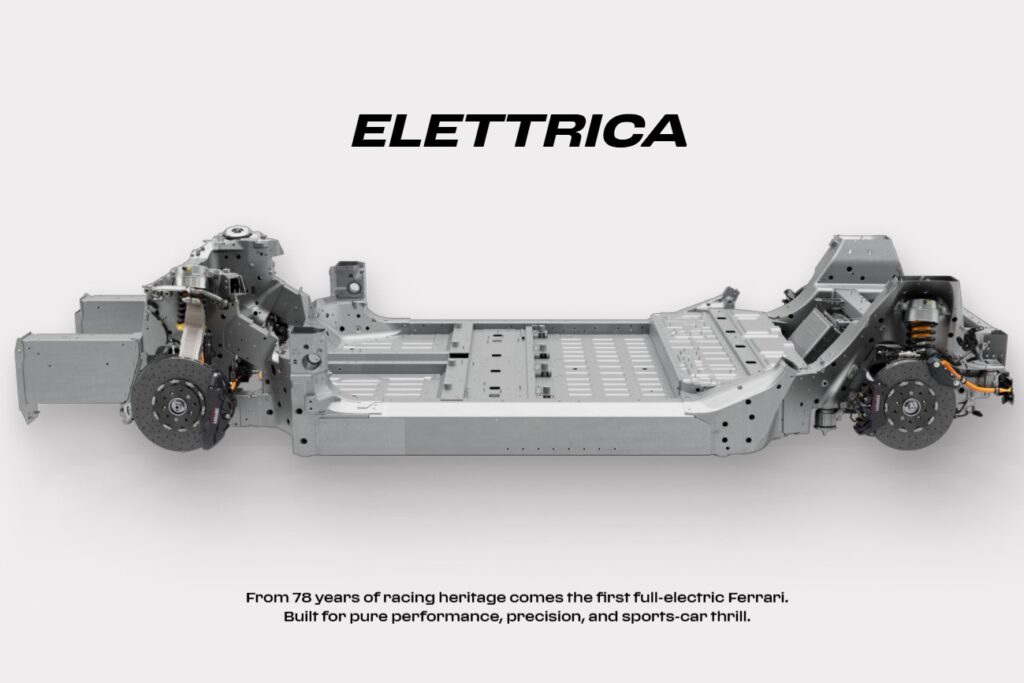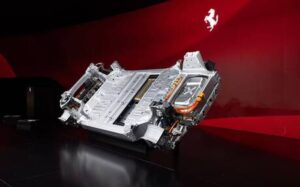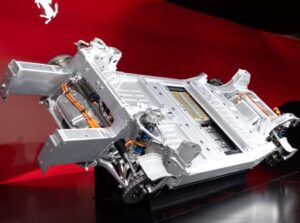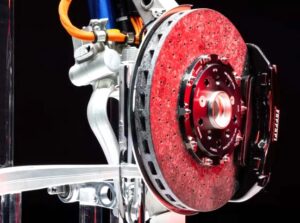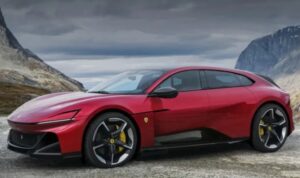On Capital Markets Day 2025 in Maranello, Italy, Ferrari unveiled the components of its first battery electric vehicle (BEV) model, the Elettrica, including its production-ready chassis, battery pack, and electric axles. Ferrari says the sporty four-door BEV can easily achieve top speeds exceeding 300 km/h and will have a range of over 500 kilometers on a single charge under Worldwide Harmonized Light Vehicles Test Procedure (WLTP). Scheduled for release in 2026, the price of the Ferrari Elettrica is speculated to be more than $500,000 (P29 Million before taxes and Customs duties).
Ferrari built the Elettrica’s components in-house at their new e-Building in Maranello. The factory is designed to produce components for their internal combustion engine (ICE)-, hybrid-, and electric-powered models under one roof. The battery, e-axles, inverters and related core technologies all come from Ferrari because the factory aims for the Elettrica to feel like a Ferrari, albeit in hyper-EV form. The layout features short front & rear overhangs, low seating position near the front axle, and a battery integrated into the floor with 85% of its mass laid out for an ultra-low cg (center of gravity).
Innovative Structure & Suspension
Ferrari built the structure from 75% recycled aluminum and added its first elastic-mounted rear subframe to improve NVH (noise, vibration & harshness) insulation without reducing feedback. The third-generation 48-volt active suspension – an evolution of the Multimatic-aided system – is designed to work faster and harder to flatten body motions while maintaining comfort and ride quality. The structure is 80 millimeters lower compared to an ICE layout and Ferrari targets a vehicle weight of 2,300 kilograms with a weight distribution of 47% front / 53% rear for a crisp turn-in, neutral balance, and exceptional handling.
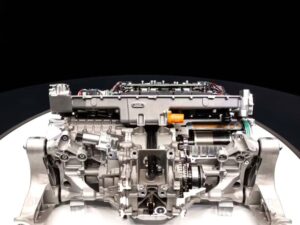
Ferrari’s first elastic-mounted rear subframe and electric drive will improve NVH insulation without reducing feedback.
Each axle carries a two permanent-magnet motors with F1-inspired Halbach rotors, carbon sleeves, and torque vectoring system that can decouple the front axle on the fly and turn the drivetrain into rear-wheel drive to reduce drag, or to allow the rear wheels to spin and scramble for grip while drifting, or just to burn rubber. The system will automatically send power to four tires when the situation demands more grip. With an 800-volt system, a 122 kWh battery pack, four motors and all-wheel drive, the Elettrica is speculated to produce more than 1,000 horsepower and accelerate from 0 to 100 km/h under 2.5 seconds.
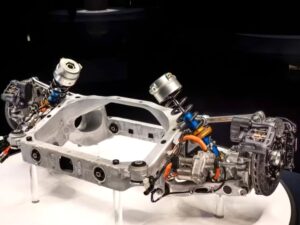
With two electric motors per axle, the Ferrari Elettrica is estimated to produce more than 1,000 hp.
Handling the Heat
Setting a target range of over 500 kilometers on a single charge, with DC fast-charging up to 350 kW, and 70 kW charged in about 15 minutes for track days, Ferrari worked on the heat management system where the floor-integrated battery pack uses a multi-plate cooling layout and serviceable modules. Maranello also worked on the regenerative braking system to provide heavy deceleration and ease the load on the carbon-ceramic disc brakes. The rear wheels steer a couple of degrees to sharpen rotation without sudden yaw changes.
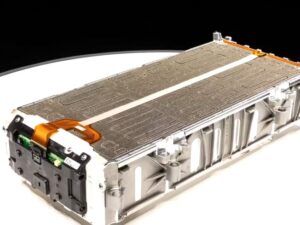
The Elettrica’s 122 kWh battery pack can be fully charged with a 350 kW DC fast-charger or be charged with 70 kW in just 15 minutes for track days.
In typical Ferrari fashion, the heat of driving really fast can be controlled with the steering wheel. The Manettino on the right side of the wheel handles chassis and stability logic while the left-hand e-Manettino manages energy and driveline choices, including RWD or AWD selection. The paddles behind the steering wheel are designed to function differently as well. The right paddle steps through five torque levels that stack acceleration like a rising boost curve while the left paddle cranks up regenerative braking to simulate engine braking at fast corners.
And Then There’s the Sound…
Ferrari did not opt to pipe in a fake V12 sound track expected of cars with a cavalino rampante (prancing horse) badge. Engineers at Maranello mounted an accelerometer to the inverter case, captured the real vibration signature of the electric powertrain, and amplified it like the pickup of an electric guitar. Push the Elettrica harder and the sound intensifies with the load and speed. Release the accelerator and the sound relaxes, similar to an ICE power plant. The sound is mechanical, not synthetic, and is in sync with the electric motors’ performance to provide the driver with useful feedback.
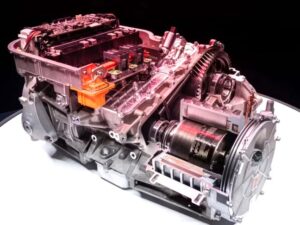
Ferrari engineers tapped the vibration of the electric drive system and amped it up to create a new Ferrari sound.
Ferrari teased that the portion-by-portion, component-by-component unveiling of their Elettrica hyper EV will continue in early 2026 with a preview of the interior design concepts. Just a few months later, in spring of 2026, the strip tease, err… unveiling will culminate with the full debut of the actual vehicle. Ooh… we just can’t wait until Ferrari unveils the complete hyper-EV!
 Power Wheels Magazine A Notch Above
Power Wheels Magazine A Notch Above

